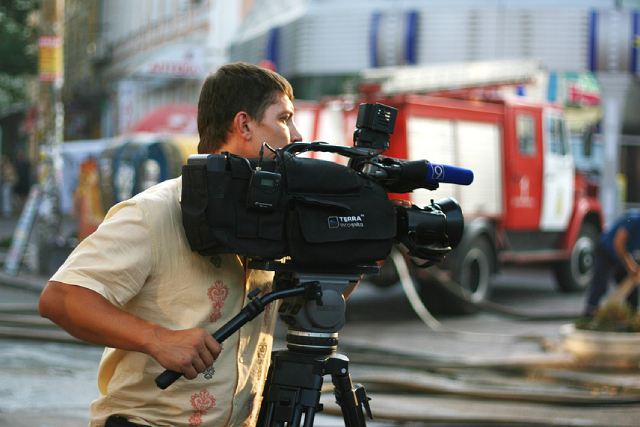
Action thrillers, medical dramas, and survival films have something in common: they often throw characters into emergency situations that demand split-second decisions. Whether it’s a car crash, a sudden cardiac arrest, or someone dangling from a cliff, the on-screen tension is enough to keep anyone at the edge of their seat. But when you look beyond the dramatics, you might start to wonder how much of what you’re seeing is actually accurate.
For viewers who aren’t familiar with healthcare or emergency response protocols, most scenes look convincingly intense and medically sound. However, ask any paramedic, doctor, or even air ambulance crew member, and they’ll likely have a few things to say about how Hollywood occasionally skips the science for the sake of storytelling. Let’s break down five common emergency scenarios often seen in films and how they compare to reality.
1. The crash and dash
The scene: A character is in a major car crash. Seconds later, an ambulance arrives almost magically. The victim is loaded onto a stretcher, given oxygen, and whisked away, all within minutes.
What movies get right: The basic idea of securing the victim and administering oxygen or an IV is standard procedure. Paramedics are trained to stabilise patients as quickly as possible, especially when there’s trauma involved.
What they get wrong: The response time is wildly unrealistic. Even in a city with a solid emergency infrastructure, ambulances don’t materialise in under two minutes. Also, paramedics don’t just rush the patient into the ambulance; they perform essential checks on-site. Head, neck, and spinal precautions are vital, and even minor movements can worsen hidden injuries. Films often skip these details for pacing.
2. Defibrillator drama
The scene: Someone collapses. A bystander yells, “He’s not breathing!” A dramatic scramble for a defibrillator ensues. The character is shocked back to life after one jolt.
What movies get right: Public access defibrillators (AEDs) are indeed lifesavers, and their usage in public spaces is becoming more widespread. The idea that they can restart a heart is partially true.
What they get wrong: A defibrillator doesn’t always work on the first try. Also, if someone’s heart has completely stopped (asystole), defibrillation doesn’t work at all. Chest compressions and proper CPR are often skipped in films, even though they’re the most crucial steps before an AED is even applied.
3. The helicopter rescue
The scene: A climber falls from a mountain ledge. Within minutes, a helicopter swoops in, dangling a rescuer on a cable, pulling the injured person to safety with medical gear at the ready.
What movies get right: Helicopter rescues are indeed used in remote or hard-to-reach areas. Air ambulance crews are highly trained and equipped to manage emergencies mid-air. For certain cases, like time-sensitive trauma or remote accidents, this is a vital tool.
What they get wrong: Real-life air rescues are coordinated with extensive planning. Flight conditions, terrain, and medical status of the patient all affect whether a helicopter is dispatched. You won’t see a helicopter circling a thunderstorm or flying blindly into a canyon. Also, there are specific medical conditions that warrant an air ambulance, and not every fall or injury qualifies.
If you’re seeking an air ambulance in Singapore or other parts of the region, for example, it’s not as simple as making a call and waiting five minutes. There are medical assessments, approvals, and logistics involved, especially in cross-border medical evacuation scenarios.
4. The poison panic
The scene: Someone is poisoned – maybe it’s cyanide, maybe it’s an exotic neurotoxin. A character shouts the name of the antidote, which is conveniently on hand. They inject it just in time, and the patient recovers almost immediately.
What movies get right: Some poisons do have antidotes. For example, naloxone (Narcan) can reverse opioid overdoses, and atropine is used for certain chemical exposures.
What they get wrong: Antidotes aren’t always available. And even when they are, diagnosis and administration take time. In many cases, the poison isn’t known until tests are done. Recovery is also rarely instant; most patients require observation and supportive care over hours or days. Films often fast-forward the drama to keep the pace up, skipping the long hours of hospital treatment and monitoring.
5. The mid-flight emergency
The scene: A passenger faints mid-flight. A flight attendant yells, “Is there a doctor on board?” A brave doctor steps forward, uses the aircraft’s medical kit, and stabilises the patient as the plane diverts.
What movies get right: Yes, this kind of scene does happen. Flight crews are trained in first aid, and commercial planes carry emergency medical kits. Airlines also have access to on-ground medical professionals via radio who can guide onboard responses.
What they get wrong: The idea that a single doctor, armed only with a few bandages and a stethoscope, can handle all in-flight emergencies is oversimplified. Medical equipment is limited, and not all aircraft have defibrillators or IV supplies. In serious cases, a medical evacuation in Singapore or the nearest country may be needed upon landing, sometimes involving an air ambulance or ground team standing by.
For international flights, this is where companies specialising in air ambulance come in. They coordinate not just the transportation but also the medical handover between countries, ensuring the patient is safely repatriated or transferred to a suitable facility.
Conclusion
Movies are made to entertain, not educate. While they do capture the high-stakes nature of emergencies, they often bend the truth to create dramatic moments. Real-life emergencies are complex, stressful, and bound by protocol, not adrenaline-filled shortcuts. It’s always fascinating to watch how emergencies unfold on the big screen, but it’s just as important to know how different the real world operates when lives are on the line.
EMA Global offers professional medical evacuation, repatriation, and air ambulance services, helping families and patients get the critical support they need in real-life emergencies.

